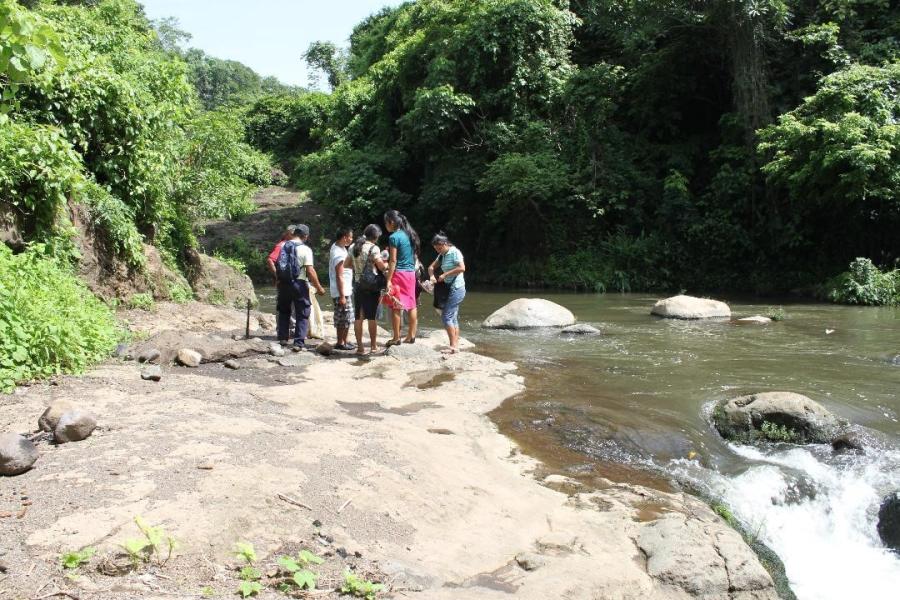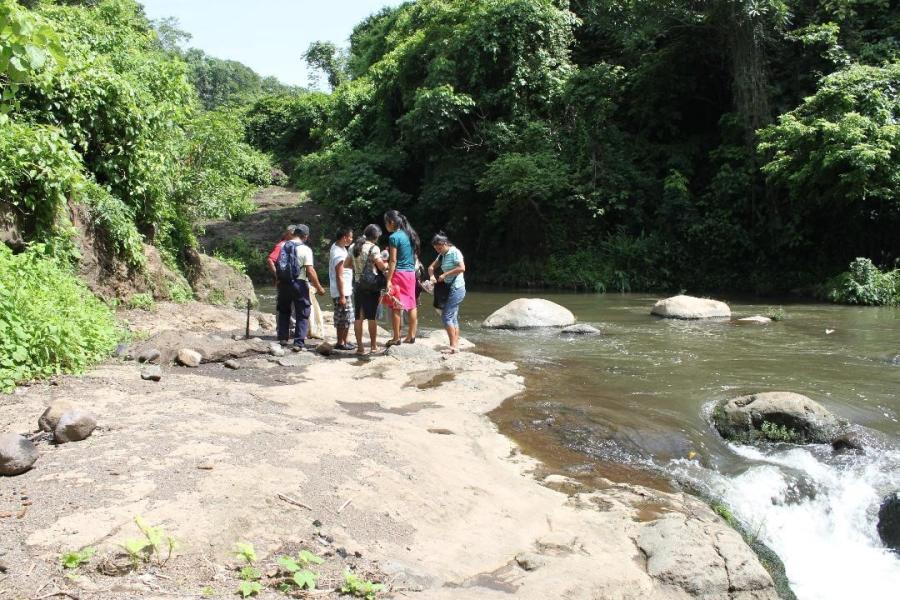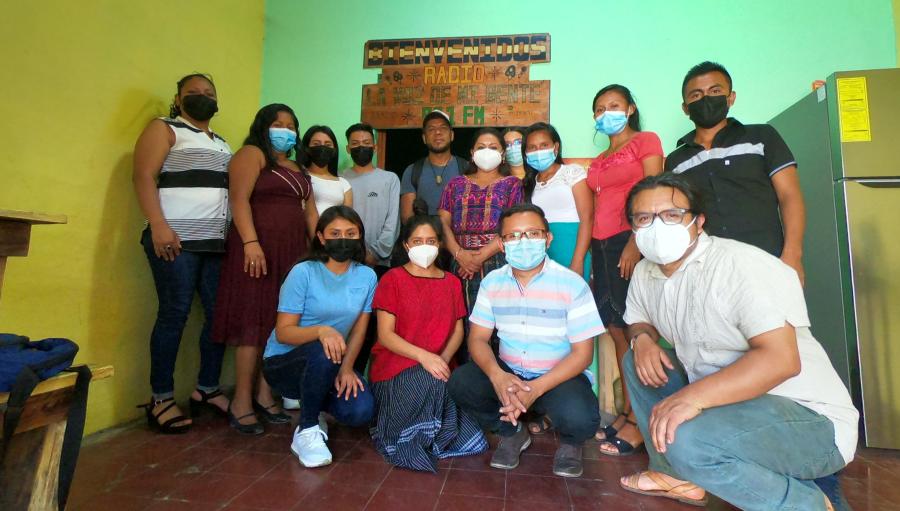The idea that a language may have political significance is not new. Some scholars define a language as a dialect with an army. When cultural survival is in question the importance of language has long been recognized. Britain, in trying to control Ireland, outlawed the use of Gaelic. In the Western hemisphere, indigenous languages generally have not been threatened so directly. Although governments have insisted on education in the language of the dominant power group, countries with indigenous populations have begun recently to nurture native languages through bilingual education programs. El Salvador, however, does not fit this pattern.
Historians, both Salvadoran and foreign, analyze the Native American situation in El Salvador as one of complete, or virtually complete, assimilation. Many acknowledge that a few Indians still wore distinctive dress in the 1970s. And at that time the national museum was running "salvage" studies in a few communities where the old crafts of cloth weaving, mask carving, basketry, and mat-making were still practiced. Complete "dance" ceremonials were recorded by museum staff in 1973-76, 1978 and 1979. Although participants in these "dances" included very young children, none of these manifestations was taken as evidence of a surviving Indian culture. Government census figures do not list Indians as a separate ethnic group. There are no official figures on the number of native speakers of Nahuat. The "educated" guesses given by scholars, both at the national and Jesuit universities, put the figure at less than one percent of the Salvadoran populace.
These figures, ironically, are a tribute to the Salvadoran Indian. They paint the picture the Indian wished his compatriots to see: a landscape devoid of "red" Indians. The picture I sketch here, based on my observations in El Salvador in the summer of 1978 and from August 1979-July 1980, is quite different. Ted Macdonald's article provides much of the background for the last twenty years. In the 1960s, El Salvador showed renewed interest in its cultural heritage. Scholarly opinion on the past status of the Indians differed. Some argued that the Aztecs recognized in the speech of the Nahuats of El Salvador a language akin to their own noble tongue and thus labeled the Pipiles as their "privileged children"; others argued that Pipiles were considered to be little more than babbling babies. Both groups of scholars, however, hold that the language is not viable today. Some think it is spoken only by a few aged souls in the remote communities of the northern departments. Others grant the tongue a larger body of speakers, but argue that these Indians no longer speak the language "correctly" and have taken steps to remedy the situation by offering courses in "proper" Nahuat-Pipil, with forms nicely cognate to and remodelled on the Nahuatl of the valley of Mexico. In the 1970s the federal government funded a Commission on the National Heritage to undertake a factual and complete study of the cultural roots. The linguistic study was supervised by a "purifier" of the national Indian language, who established a base for study and teaching of the language in the town of Izalco. At the same time, the Indians began to re-emerge, cautiously and in small groups. With the aid of the Pan American Indian Movement, a national Asociación Indígena was founded. One of the aims of this group was to preserve their culture, including their language. Another goal was to disentangle themselves from the fuzzy classification of "campesino," and to establish themselves as an autonomous group, with unique problems and concerns. Members of this group met researchers from the national museum, and once convinced of their sincere interest in Indian culture, aided these scholars by contacting surviving artisans and providing them with entrance to dance ceremonies, which had been held in complete privacy for thirty years. In return, the Indians asked that copies of all studies on their culture published by the museum be given to the Asociación for distribution in the communities. Successful cooperation between the museum and the Indians encouraged the Asociación leaders to seek further outside assistance in their revitalization program. Although young people participated in the dances, most dialogues had been translated into Spanish. Children learned Spanish first and acquired Pipil only after finishing their formal schooling, when parents felt it safe to expose them directly to the language. Thus, children acquired Pipil poorly or not at all. Of the Asociación's five council members, men in their late thirties and early forties, only one spoke Pipil well enough to converse and tell stories. The others could utter only set phrases, though most had good passive recognition of the language. The council's top priority was the establishment of an Indian-run school, separate from the government schools, where children could be taught Pipil. In the mid-1970s, the Jesuit-run Universidad Centroamericana (UCA) "José Simeón Cañas" also decided to study El Salvador's cultural roots. The resident linguist began constructing a linguistic atlas of the country, documenting the truly national flavor of the local Spanish and above all the peculiarly indigenous language - Pipil. After several months of experimentation, a core of seven students and three faculty researchers was selected; they were assisted by Dr. N.A. McQuown and myself. During this time the Asociación Indígena first made contact with the UCA, through a museum researcher. Hearing that the UCA sought to launch a Nahuat study, the Asociación volunteered to provide the first Pipil speakers to attune the research team's collective ear, and then to provide the team with the necessary entrance into the closed Indian communities. In return, the UCA was again asked to provide copies of all interviews to the Asociación and to aid in the literacy program, by developing an alphabet and training Indian teachers. The UCA team readily agreed. During the training course for the researchers, eight hours of tapes with Asociación speakers were obtained. By August 1979 the Indians were angry and disillusioned. Not only had the principal investigator's interest turned to politics but not one taped interview had reached their hands. By December, a new student research team prepared a tentative alphabet and transcribed the tapes on hand using the suggested alphabet and one alternative script. These documents were submitted to the Indian council and the study began again. This research was aimed at estimating the number of Pipil speakers and their geographic distribution. The initial survey revealed that about one in ten households in the departments of Sonsonate, Ahuachapán, and La Libertad has at least one person who could speak Nahuat; of those households with a Nahuat speaker, most had two fluent speakers, usually elderly, with less fluent middle-aged speakers, and children who know only words, not grammar. In the neighboring departments, including that of the capital, San Salvador, the percentage of Nahuat-speaking households dropped drastically. In the southern and eastern departments, no native speakers of Nahuat were found. While hardly speaking for a silent majority, these figures indicate that many more people speak Nahuat than previously estimated. These figures tend to support the Asociación's estimate that Indians comprise a third of the population of Sonsonate and Ahuachapán and, in rural areas, perhaps as much as ten per cent of the "campesino" populace in the northern departments. Student investigators interviewed a non-Indian landowner in a northern coastal province who learned Nahuat in order to direct his fieldhands. His knowledge did not include grammar, but he understood approximately one-quarter of the vocabulary items on the questionnaire and volunteered other agricultural terms and animal names. This suggests the presence of a large Indian labor force. During January 1980, Asociación members sought out possible Nahuat instructors, all native speakers, in the various Indian communities, and the UCA continued with its long interview format to collect materials for readers and to further familiarize UCA students (the would-be teachers of the Indian teachers) with the language. In February, however, the simmering cauldron of revolution began to boil over in the countryside. The Mono Blanco, a right-wing terrorist group, began eliminating leftists. At the same time, the Indian = communist equation of the 1930s resurfaced. Indians, in turn, shied away from UCA students. By mid-February interviews' could be taped only in the presence of Asociación members. During March, people would converse in Nahuat with members of the UCA team, but would not allow taping or transcription of these conversations. By the end of the month, conversations with outsiders were impossible, for as one man aptly stated, "es muy político, es demasiado político" ("it's very political, it's too political"). The Asociación went underground in most of its activities, and there was also evidence that it worked to hermetically seal the communities, even against UCA researchers. All plans for an open Nahuat school were dropped. No further contact with the UCA was made for teacher training, and the promised interviews and studies could not be delivered. While this was a necessary measure for self-preservation, it perhaps tolls the death knell of the language. With few fluent speakers under forty, propagation of the language in the homes is difficult. Some outside instruction is crucial, yet it cannot be established in times when teachers and pupils would be earmarked for assassination. Furthermore, the old parent philosophy that Spanish monolingualism is a safeguard for the children, discourages even clandestine instruction. The pool of potential teachers, however, contracts every year. Unless the civil strife is resolved, and resolved "liberally," no Nahuat speaker will dare greet his neighbor in the street, much less address a classroom, in Pipil. The language is indeed "muy político." It is, in fact, a prisoner of the ongoing war, and if the conflict drags on, the language, along with many other living forces in El Salvador, may well enter the doleful list of "desaparecidos." Article copyright Cultural Survival, Inc.




